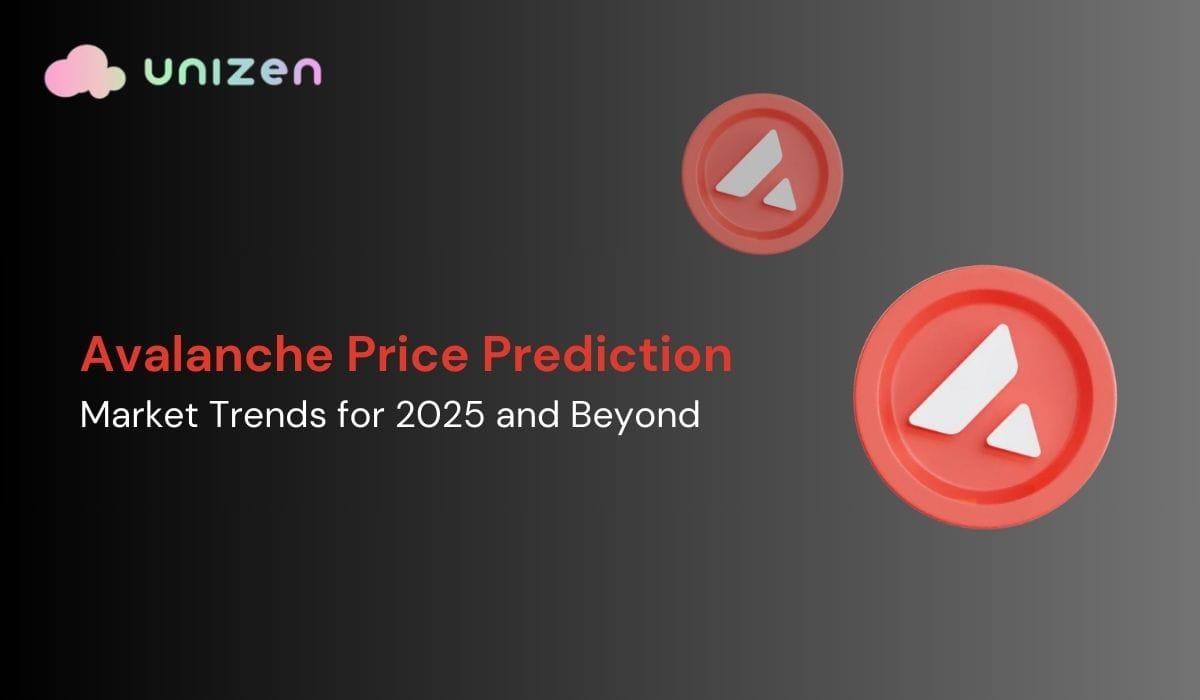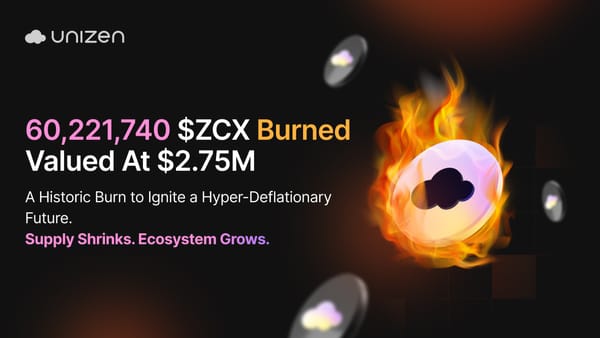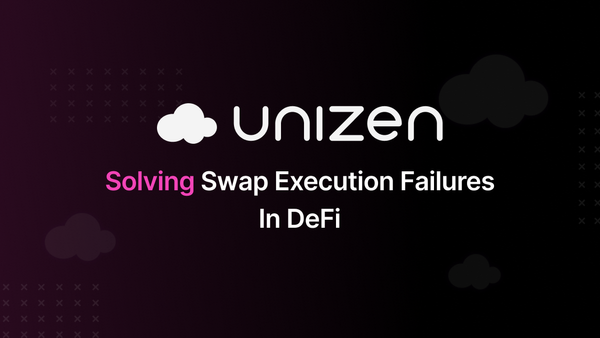Avalanche Price Prediction: Market Trends for 2025 and Beyond
Determine whether Avalanche is a smart long-term investment for the future. Learn how AVAX works, and take a look at Avalanche's 2025–2030 price prediction.

The crypto market is one of the most dynamic and volatile financial landscapes that offers investors the potential for big returns, but it is quite risky. Avalanche (AVAX) is a serious competitor among many blockchain projects that are competing for attention because of its speed, scalability, and unique architecture. After the demand for Avalanche increased, more investors and analysts were ready to predict where exactly the price would go in the future. However, price prediction in the crypto market is basically dynamic because of the volatility of the industry and technological developments.
Overview of Avalanche (AVAX) as a Cryptocurrency
Avalanche (AVAX) is an open-source, decentralized blockchain network that allows developers to develop third-party decentralized applications and deploy them. AVAX aims to provide scalability, low fees, and low latency transactions. Avalanche was created by a team of developers in 2020, including Stephen Buttolph, Amani Moin, Kevin Sekniqi, and Emin Gün Sirer, and then developed by Ava Labs.
It is a competitor to Ethereum because of its unique consensus algorithm and interoperability. Avalanche is known for its three-blockchain structure:
- X-Chain (Exchange Chain): It deals with the creation and exchange of assets.
- C-Chain (Contract Chain): Supports the use of smart contracts
- P-Chain (Platform Chain): Manages validators and subnets. Users are then allowed to create new L1s (groups of validators working together to achieve consensus). This then makes it scalable.
It allows Avalanche to process 4,500 TPS (much greater than Ethereum's 15–30 TPS) without sacrificing its decentralization and security. Avalanche includes a Proof-of-Stake (PoS) consensus protocol, which allows developers to create blockchain networks called subnets.
Avalanche is one of the fastest smart contract platforms; it has a less than 2-second time-to-finality and is quicker than Ethereum and Bitcoin when it comes to reaching finality on transactions.
Why Price Prediction is Necessary in the Crypto Market
- Investment Decisions: Traders and investors make investment decisions based on price forecasts, such as whether they should sell, hold, or purchase AVAX.
- Market Sentiment Analysis: Price forecasts influence market psychology, with liquidity and demand affected accordingly.
- Project Valuation: Developers and stakeholders use forecasts to gauge the profitability of blockchain projects in the future.
- Institutional Interest: Institutions decide future price directions prior to investing in crypto assets.
Also, as a result of Avalanche's increasing ecosystem, for example, enabling decentralized finance (DeFi), gaming, and non-fungible tokens (NFTs), price projections help investors anticipate its growth trajectory.

Techniques of Avalanche's Price Prediction
There are some analysis techniques that investors and traders use to make estimates. Each of these techniques provides unique insights into market behavior and potential future price movement:
Technical Analysis (TA)
Technical analysis is the most popular method for predicting the price of AVAX. It depends on the historical prices, volumes, and market patterns to find trends that may provide hints of potential direction in the future. Its key indicators are:
- Moving Averages (MA): This filters out the price activity and assesses the trends. 50-day and 200-day moving averages are used to identify bullish or bear trends, respectively.
- Relative Strength Index (RSI): Reveals whether AVAX is overbought or oversold. RSI less than 70 shows overbought levels (potential price drop), and less than 30 shows oversold levels (potential price rise).
- Moving Average Convergence Divergence (MACD): Shows momentum based on the comparison of a short-term and long-term moving average. When the MACD line crosses the signal line upward, it indicates a bull trend; when the MACD crosses the signal line downward, it is a bear trend.
- Bollinger Bands: It measures the price volatility. Thus, if the AVAX price is moving toward the upper band, it means that the levels are overbought, and a move toward the lower band means oversold levels.
Fundamental Analysis (FA)
Fundamental analysis evaluates the native value of Avalanche in terms of its technology, adoption, and ecosystem growth. Technical analysis looks into price trends, while fundamental analysis considers its long-term value. The indicators are:
- Technology and Innovation: Avalanche's three-blockchain framework offers speed, scalability, and affordability. Continuous improvements, e.g., subnets and Ethereum cross-chain compatibility, increase its long-term value.
- Adoption and Utility: Growing DeFi, NFT, and gaming usage expands AVAX's utility base. A growing adoption tends to support price appreciation.
- Network Activity and Staking Quantities: Active account numbers, transactions, and staked AVAX coins indicate network health. Also, increased staking engagement can reduce circulating supply, which can drive prices upwards.
- Competitor Analysis: Avalanche competes with Ethereum, Solana, and Polkadot. A sound competitive edge can make it more attractive to investors.
Sentiment Analysis
Sentiment analysis examines market psychology by taking into account the way investors feel about AVAX. Public opinion can greatly influence short-term price action. Some factors affecting sentiment analysis are:
- Social Media Trends: Tweets, posts, and comments referring to Avalanche on Twitter, Reddit, and Telegram can be a proxy for investor sentiment. Conversational surges tend to occur prior to price movement.
- News and Regulatory Updates: Positive news, such as new partnerships and institutional adoption, tends to drive AVAX's price upwards.
- Negative news like security breaches and government action tend to induce sell-offs.
- Community Participation: An energetic, upbeat community is a sign of trust in the future of AVAX, and strong engagement projects tend to hold prices better.
Machine Learning Models
Due to advancements in AI, machine learning models have become effective models for making predictions of crypto prices. They scan vast data sets to identify hidden patterns. Some Common Machine Learning Models for AVAX Price Predictions include:
- Long Short-Term Memory (LSTM): A deep learning model that identifies time-based patterns within price data. It is suitable for forecasting future price behavior based on previous performance.
- Gated Recurrent Units (GRU): Less computationally expensive than LSTM but produces the same results. It helps predict short-term price action.
- K-Nearest Neighbors (KNN): Priced movements grouped based on similar past trends. It can indicate whether AVAX will go up or down based on past actions.
Avalanche (AVAX) Price Prediction for 2025-2030
Avalanche (AVAX) will experience monumental price movements in the future, driven by fundamental take-up, sentiment, and technical indicators. Based on current analyses, this is a rundown of AVAX price forecasts:
Factors Influencing Avalanche (AVAX) Price
Here are some factors that can influence the price movement of AVAX in 2025 and beyond:
Market Trends & Macroeconomic Conditions
Overall, the health of the cryptocurrency market and global economic trends are significant in AVAX price. Whenever the price of Bitcoin increases, altcoins like Avalanche also experience an increase in their prices. Furthermore, government policies, taxation, and regulations may determine or affect investor sentiments. Positive regulation certainty fuels AVAX adoption, while stringent regulations slow its development. The increasing institutional adoption of crypto assets, particularly in DeFi, can boost AVAX demand.
Adoption of Avalanche's Blockchain Technology
Avalanche's fast transaction speed of over 4,500 transactions per second (TPS) with minimal fees makes it highly likely to replace Ethereum. As more projects move to Avalanche, there is potential for higher demand for AVAX. As more projects migrate to Avalanche, there may be greater demand for AVAX. Its use in the DeFi system adds to the token's utility. Similarly, more NFT applications and gaming applications on Avalanche create demand, and corporate and government adoption has the potential to drive further adoption. Furthermore, Avalanche Ethereum Bridge (AEB) provides an easy asset transfer, increasing interoperability and making AVAX a better choice for users and developers.
The Competitive Situation in the Crypto Space
Some strong competitors dictate the growth potential of Avalanche and remain at the top of the market. Ethereum Layer-2 scaling solutions, i.e., Ethereum 2.0, rollups, and Layer-2 scaling solutions, are Avalanche's competitors in terms of attracting developers. There are also future blockchains with new consensus algorithms and higher scalability that could erode Avalanche's dominance. One needs to keep up with its tech progress for it to last in the long run.
Avalanche Vs Ethereum
Avalanche (AVAX) and Ethereum (ETH) are two heavy-duty blockchain platforms with distinct strengths. Avalanche provides cheap and fast transactions, whereas Ethereum is the most employed smart contract platform. Avalanche supports up to 4,500 transactions per second (TPS), while currently, Ethereum supports 15-30 TPS and will shortly be upgraded further with Ethereum 2.0 and Layer 2 solutions.
While Avalanche uses the Snowman consensus protocol that supports faster transaction finality (~2 seconds), Ethereum shifted to Proof of Stake (PoS) with Ethereum 2.0, which is energy-efficient and secure.
Transaction Fees (Gas Fees) tend to be cheaper in Avalanche due to its well-optimized architecture. Ethereum gas fees are subject to network load and can be much higher.
Ethereum has a larger number of validators and, thus, more decentralization. Avalanche is highly secure, but there are fewer validators, and it is not a concern with such high centralization.
Ethereum leads DeFi, NFTs, and dApps, and they have massive platforms like Uniswap and OpenSea. Avalanche is growing but with a smaller ecosystem.
For smart contract developments, both platforms have Solidity-based smart contracts, enabling developers to develop and port dApps with ease.

Avalanche Prediction vs. Stars
Stars Arena is a social finance (DeSo) protocol on Avalanche in which users can trade "tickets" based on social media handles. This has boosted network activity in Avalanche, but its price impact remains marginal compared to other big DeFi projects. In terms of price, Stars Arena's unexpected increase in adoption made AVAX more popular. However, there have been concerns over platform stability and transparency of the development team, which made people question its long-term impact. Unlike Avalanche, which already enjoys strong ground in DeFi and blockchain circles, Stars Arena is in its infancy stage.
Technically, Avalanche is a robust blockchain platform with high speeds and low fees for transactions, whereas Stars Arena is an independent app within this framework. The main differences between the two are Avalanche's broader applications, which range from decentralized apps and smart contracts to institutional blockchain usage, whereas Stars Arena focuses on social interaction.
Key Metrics for Comparison
- Market Capitalization: Avalanche has a much larger market cap because of its greater adoption and usability.
- Trading Volume & Liquidity: AVAX sees higher trading volume and liquidity across different exchanges, which means it is a stable investment asset.
- Adoption Rates & Ecosystem Growth: Avalanche continues to increase with DeFi applications, NFT platforms, and business blockchain projects, whereas Stars Arena is a niche product for a specific community.
Tools for Cryptocurrency Comparative Analysis
These are tools that help investors and traders understand market trends, user behavior, and sentiment. They include:
Price Prediction Models
Various models help in comparing cryptocurrencies based on historical data, technical indicators, and forecast algorithms. Some of them include the technical analysis models as mentioned earlier (MA, RSI, and Bollinger Bands), machine-learning & AI-based models, and fundamental Analysis models that examine a project's adoption rate, developer activity, and partnerships. These models help compare Avalanche's price potential with other digital assets, considering past trends, macroeconomic conditions, and investor sentiment.
On-Chain Metrics
On-chain analysis provides real-time blockchain data to analyze network health and activity. In terms of transaction volume, strong transaction volumes indicate robust network usage and adoption, and relative AVAX daily trade volume comparison to peer blockchains like Ethereum (ETH) and Solana (SOL) is used to estimate its utilization of the network. For active addresses, a growing number of active unique addresses signifies an increasing user base. The active wallet count of Avalanche compared to Ethereum or BNB Chain shows its adoption rate. Total value Locked (TVL) is used to represent the value of funds locked in DeFi apps on a blockchain. AVAX TVL, relative to chains like Solana or Cardano, measures its competitiveness in DeFi's market. These metrics provide a quantitative way to compare Avalanche's performance with other blockchains.
Sentiment Analysis
Sentiment analysis provides a means of estimating investor sentiment and market mood based on social media trends. On X, formerly Twitter, it monitors engagement, hashtags, and trending discussions about AVAX. On other platforms, it tracks whales, token attitudes, and upcoming advancements.
Risks and Limitations in Avalanche Price Predictions
Several risks and limitations must be considered while predicting the prices of AVAX:
- Volatility in the Crypto Market: Cryptocurrency markets are well known for their wild price fluctuations, which often result from events outside of traditional financial worlds. AVAX, like most cryptocurrencies, can have its prices spike or dive severely within hours or days. Recent examples are AVAX's 2021 bull market to $146 and a following collapse in 2022 during other market downtrends. Influencers' opinions, news, and unexpected events (e.g., exchange collapses) can catalyze extreme market responses. While AVAX is extremely liquid on major exchanges, sudden whale selling can bring about unexpected price action. The intrinsic uncertainty of crypto volatility exposes even the most advanced price forecasting software to errors.
- Impact of regulatory changes or technological disruptions: The crypto ecosystem is still evolving, and government policy has the potential to make a significant impact on price action. Governments are now regulating crypto trading, DeFi protocols, and staking protocols. Legal hurdles (e.g., U.S. classification as a security) for Avalanche or its ecosystem would hurt investor sentiment and affect AVAX's price. Countries like China have previously banned crypto trading, leading to huge sell-offs, and tighter regulations in key markets like the U.S. or EU could influence Avalanche adoption and the direction of price. Another thing is that while blockchain networks are constantly evolving, competitors like Ethereum, Solana, and Cardano are improving scalability and efficiency. If Avalanche cannot maintain its edge in transaction speed, security, or developer adoption, it can lose market share, which will influence price predictions.
- Limitations of Predictive Models: AI-based predictions are likely to be based on historical data, but historical results cannot predict future results. This overfitting is due to a model being too dependent on past trends, so it does poorly when market environments shift. Price models cannot predict any macroeconomic disaster, hacks, or major failures in the protocol. A severe security breach in the Avalanche system or a global economic crisis will invalidate any price prediction made.
Conclusion
Avalanche remains one of the most promising blockchain projects, and its smart contracts platform supports both decentralized applications and autonomous blockchains, making it a strong competitor in the cryptocurrency space. Although Avalanche's future price is difficult to speculate and takes a multi-faceted approach, its trajectory is definitely going to be shaped by broader industry developments.



